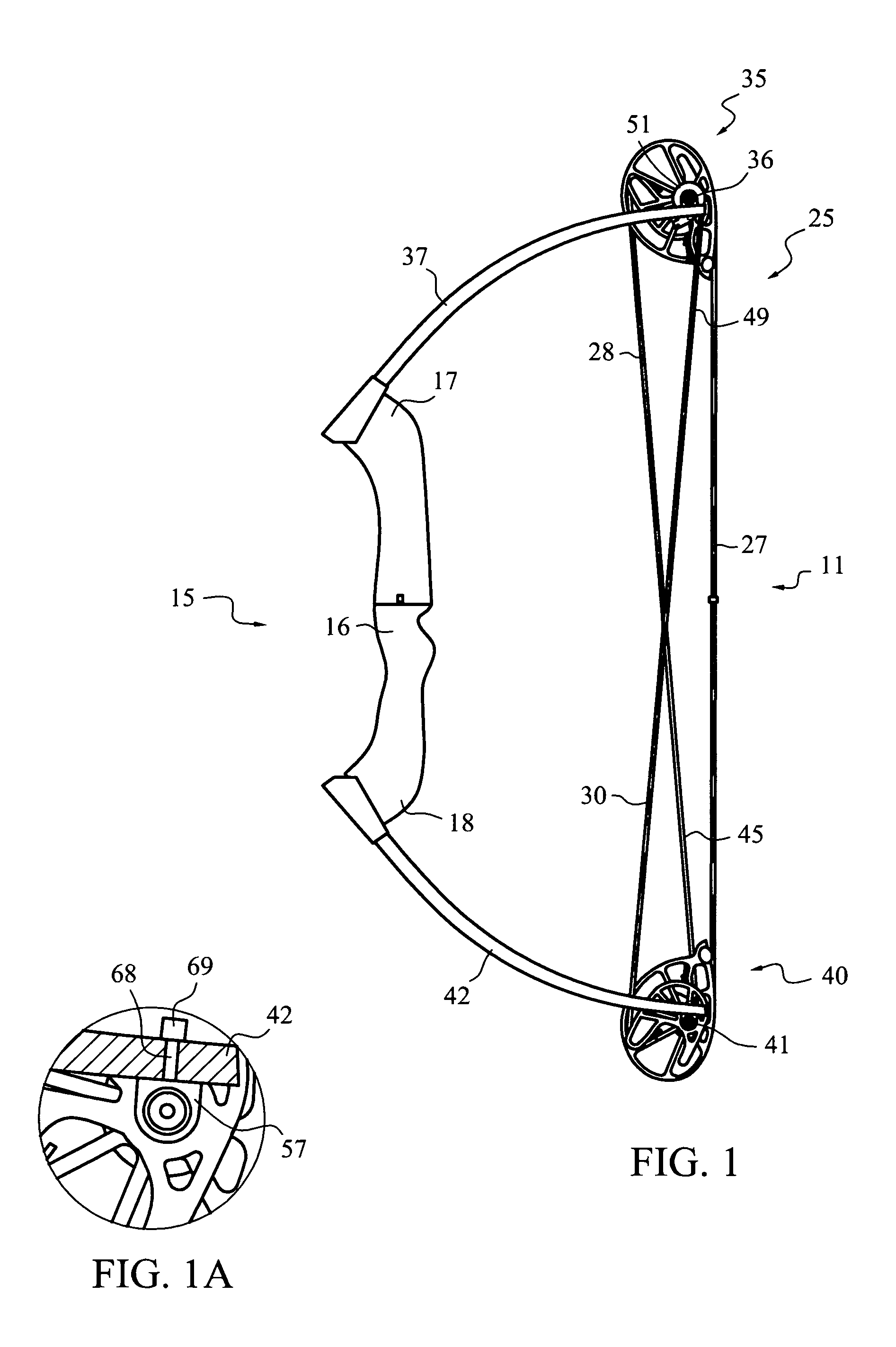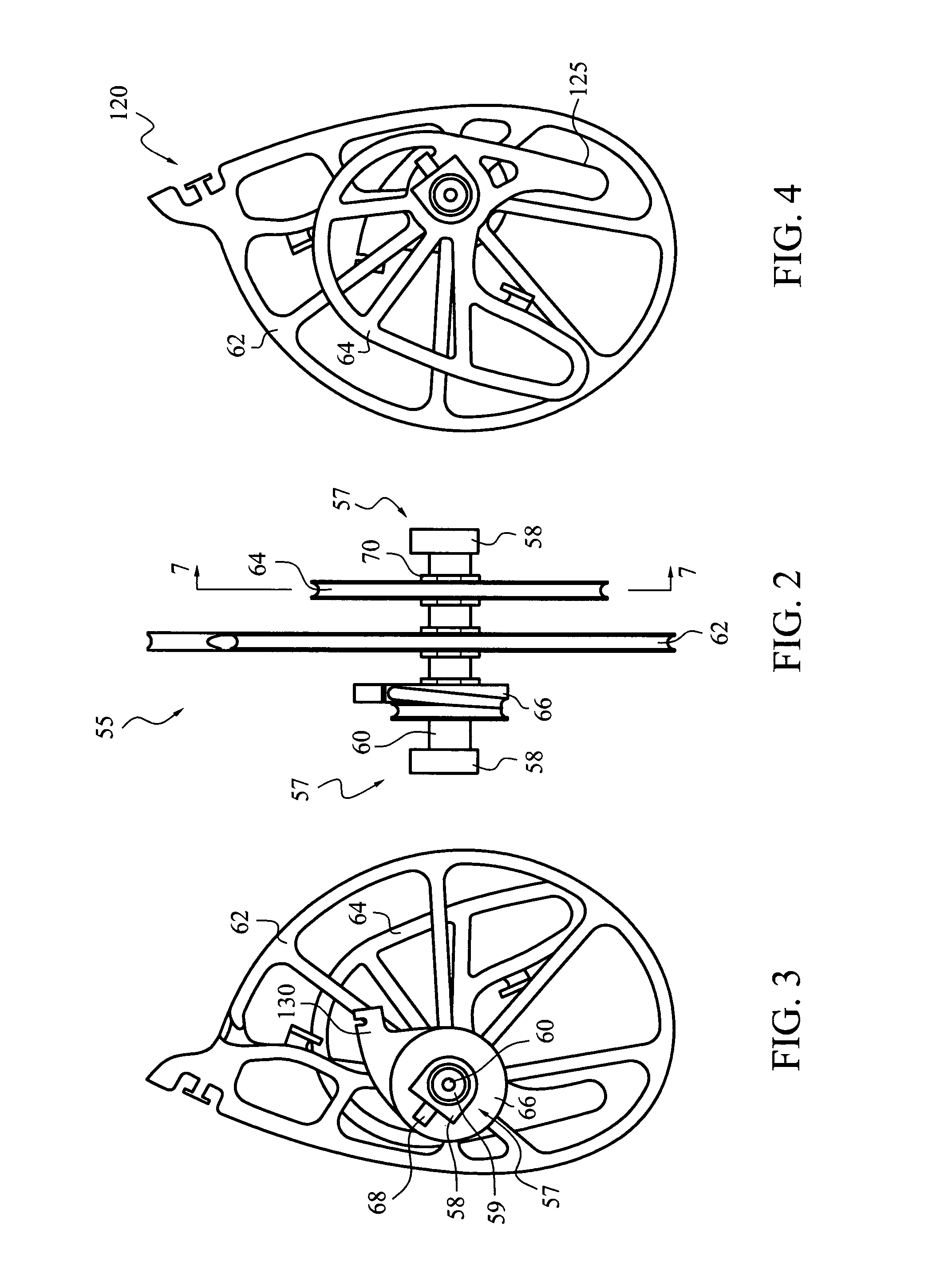Pulley assembly and axle for compound bows
a technology of pulleys and axles, which is applied in the direction of spring guns, white arms/cold weapons, weapons, etc., can solve the problems of time-consuming and technical adjustment of rigging, and inability to achieve the performance of single cam configuration in other respects, so as to facilitate shoot-through
- Summary
- Abstract
- Description
- Claims
- Application Information
AI Technical Summary
Benefits of technology
Problems solved by technology
Method used
Image
Examples
Embodiment Construction
[0059]The compound bow, generally 11, illustrated by FIG. 1, is of generally conventional construction. It includes a handle riser component, generally 15, with a grip 16, an upper end 17 and a lower end 18. The rigging, generally 25, includes a bowstring 27, and two synchronizing cables 28, 30. An upper pulley assembly, generally 35, includes an integral pivot axle 36, mounted at the tip of an upper limb 37. A lower pulley assembly, generally 40 similarly includes an integral pivot axle 41 mounted at the tip of a lower limb 42. The rigging 35 is arranged generally as described by copending U.S. patent application Ser. No. 11 / 241,030, with the synchronizing end 45 of the cable 28 coupled to the pulley assembly 40 through a synchronizing anchor component (not visible). Similarly, the synchronizing end 49 of the cable 30 is coupled to the pulley assembly 35 through a synchronizing anchor component 51. This “cross coupling” configuration, while not required, is a desirable feature for ...
PUM
 Login to View More
Login to View More Abstract
Description
Claims
Application Information
 Login to View More
Login to View More - R&D
- Intellectual Property
- Life Sciences
- Materials
- Tech Scout
- Unparalleled Data Quality
- Higher Quality Content
- 60% Fewer Hallucinations
Browse by: Latest US Patents, China's latest patents, Technical Efficacy Thesaurus, Application Domain, Technology Topic, Popular Technical Reports.
© 2025 PatSnap. All rights reserved.Legal|Privacy policy|Modern Slavery Act Transparency Statement|Sitemap|About US| Contact US: help@patsnap.com



